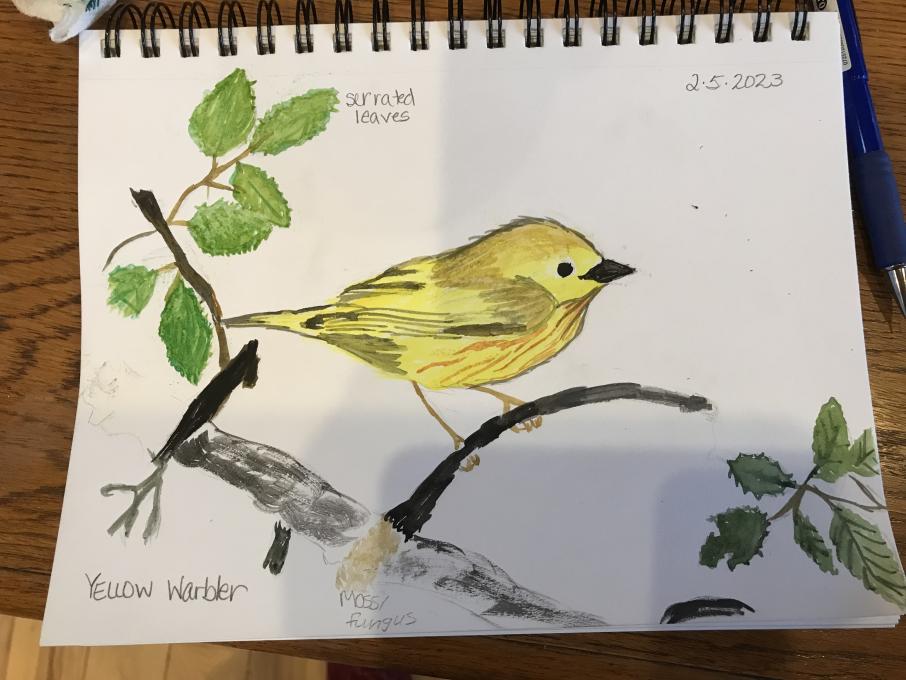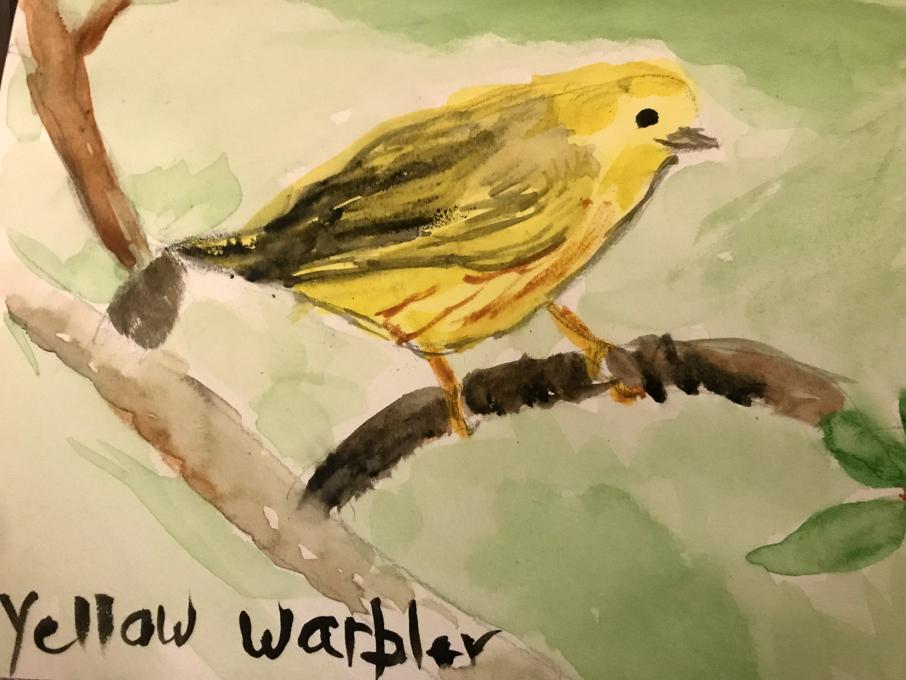The Cornell Lab Bird Academy › Discussion Groups › Nature Journaling and Field Sketching › Jump Right in!
-

-
 This was a fun exercise. I think I will need to focus on getting more accurate proportions/shapes to start before I add details. I didn't attempt any color yet but thought about using some colored pencils to suggest color notes. The advantage to drawing from a photo is that there is plenty of time to do the drawing.
This was a fun exercise. I think I will need to focus on getting more accurate proportions/shapes to start before I add details. I didn't attempt any color yet but thought about using some colored pencils to suggest color notes. The advantage to drawing from a photo is that there is plenty of time to do the drawing. -
I always think my bird drawings look like the bird is smiling. I think that's odd and really not very accurate but still I like following the lines of the little bird. I noticed the streaking more as I took the time to look at him closely.
-
 I felt that it was a little hard to make the picture as realistic as the real photo. I think the shape of the bird was a little challenging and drying the features inside the bird was extremely challenging. I might not have noticed how many streaks there were in the bird. Yes, it does make a difference when your journal it because you have to get all the details.
I felt that it was a little hard to make the picture as realistic as the real photo. I think the shape of the bird was a little challenging and drying the features inside the bird was extremely challenging. I might not have noticed how many streaks there were in the bird. Yes, it does make a difference when your journal it because you have to get all the details. -
I used colored pencils as I’m doing this in my office. It ended up looking flat. I can spend more time on layering feather groups

-

-


-
I couldn’t quite get the eye the way I wanted it until I zoomed in a noticed this little ring of skin around the bird’s eyeball! Totally shifted how it looked to me by attempting to add that detail in my drawing. Feathers were difficult for me to capture… would be interesting to draw single feathers to get a sense of their structure.

-

-

-
I felt comfortable with sketching the basic shapes and outlines of the bird and branches. It was a challenge getting textures and fine details.

-

-

-
 There is a little area around the eye from the eyelids that I would have missed if not sketching it.
There is a little area around the eye from the eyelids that I would have missed if not sketching it. -
24 Feb 2023 1. I like having the time to work on the proportions (a big challenge). The drawing became easy and fun once I was able to get over the "nervies". 3. The subtle title in the head and the turn of the body; still didn't get these down as well as I'd like. The Warbler was looking over its shoulder me and I'd like to be able to get these gestures and get away from the flat look. This may be more difficult in nature journaling because of the time factor; and I'm still striving to catch the liveliness in nature.
-

-
 I am no artist, but I have really enjoyed doing this. I noticed small details of the feathering and leaves. Can’t wait to start adding watercolour but have no idea how to do it! I find proportions the most tricky. But I am pleased with the outcome of my first task. 😊
I am no artist, but I have really enjoyed doing this. I noticed small details of the feathering and leaves. Can’t wait to start adding watercolour but have no idea how to do it! I find proportions the most tricky. But I am pleased with the outcome of my first task. 😊 -
Truly enjoyed seeing all the details. Also: what a difference it made to use the pencil recommended in the course; I've struggled to find a pencil I like to draw with, and this was great. The bird's feet were challenging for me -- proportions, angles. I did not realize how streaky the breast of the bird was until I started to draw it; or how very distinctive the different kinds of feathers are (nice to be able to zoom in to see the details) This is very much an advantage when learning about a bird.
-
Obviously I need to work on my photography skills again - took me longer to get the picture, research to remember how to adjust the lighting, and download it than it did to do the drawing. I am a good drawer, but my biggest problem is getting bogged down in details, and taking waaaaay too long to produce a picture. I am hoping this course helps me to 'loosen up' and create something in the same year I started it. I took a course through the Robert Bateman Foundation in Victoria and one thing that always resonated with me was the instructor talking about 'giving the illusion' of feathers, or fur, or whatever versus drawing every single excruciating detail. I try to keep that in mind. Also, my animal/bird feet are normally appalling but I am quite happy with this guy's feet. Another thing I do is when I want a loose, uneven line such as on a branch, I switch to my left hand and draw. Drawing with my right hand tends to produce smooth, unrealistic looking branches.

-
Getting the general shape of the bird was a challenge - as was making the feathers look like individual feathers.
-
1. I think it turned out well, but could be improved. The branches were fairly easy to draw, but the bird itself was more difficult. 2. A small twig of some sort was sticking out of a larger one that took a few seconds to notice.
-
I have to say, I would have liked some instruction here. I opted not to mess up my drawing with watercolour at this stage, as I can't remember what colours to lay on or how to lay them on (i.e, what brushes to use). As a companion to this course, I am reading a book I purchased that was recommended in another Cornell course I took - The Sierra Club Guide to Sketching in Nature. The section on brushes was particularly interesting. I tend to draw very slowly, plus as ranchers the day is continually interrupted so I'm moving ahead on the course while I complete this drawing.
-
I just began a class through Cornell Labs on drawing birds. I am learning about the various feather groups in that course and found it interesting to note those in drawing the Yellow Warbler. I did try to use watercolors on this picture but feel instead of enhancing the bird, the colors, especially in the flank of the bird,
 did not show the accurate coloring of the bird.
did not show the accurate coloring of the bird. -
Drawing the yellow warbler from the photo was a challenge for me. I wasn’t sure where to begin. I thought with the bird, but found myself focusing on the branch and foliage. Had difficulty with sizing spacing on my page. Tried painting, but think layering colors is needed and figuring out what colors to mix to get desired hues. Drawing from photo was easy as the subject stayed in one place. The colors of the stems leading to the leaves would not have been notice without drawing it. Details are key to drawing I think.

-
I think drawing from the photo is easier than being out of nature. You are able to see all the details. I think using the watercolors made it easier to get finish the picture in a fair amount of time. The details of the branch was challenging for me and also those details I would have missed if I just looked at the image rather drawing/painting it. I think that's the point of nature journaling is to see the details. Notice the moss growing, the leave being green, the bird rather plump compared to the ones I see on their migration that are thin from the journey, the background swathed in green. Someone mentioned below that they had a hard time with the beak. I did too. I think the head loos more like a yellow platypus rather than a yellow warbler. I also left no room for words, but I suppose I can write over the paint.

Read More:
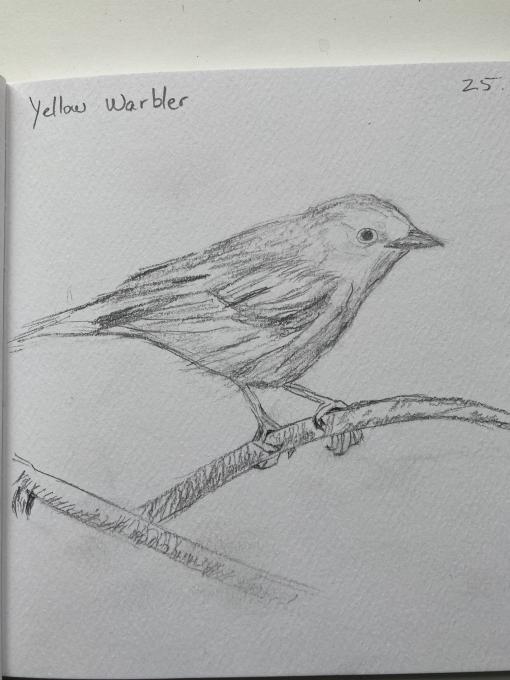
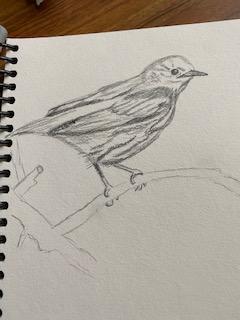 This was a fun exercise. I think I will need to focus on getting more accurate proportions/shapes to start before I add details. I didn't attempt any color yet but thought about using some colored pencils to suggest color notes. The advantage to drawing from a photo is that there is plenty of time to do the drawing.
This was a fun exercise. I think I will need to focus on getting more accurate proportions/shapes to start before I add details. I didn't attempt any color yet but thought about using some colored pencils to suggest color notes. The advantage to drawing from a photo is that there is plenty of time to do the drawing. 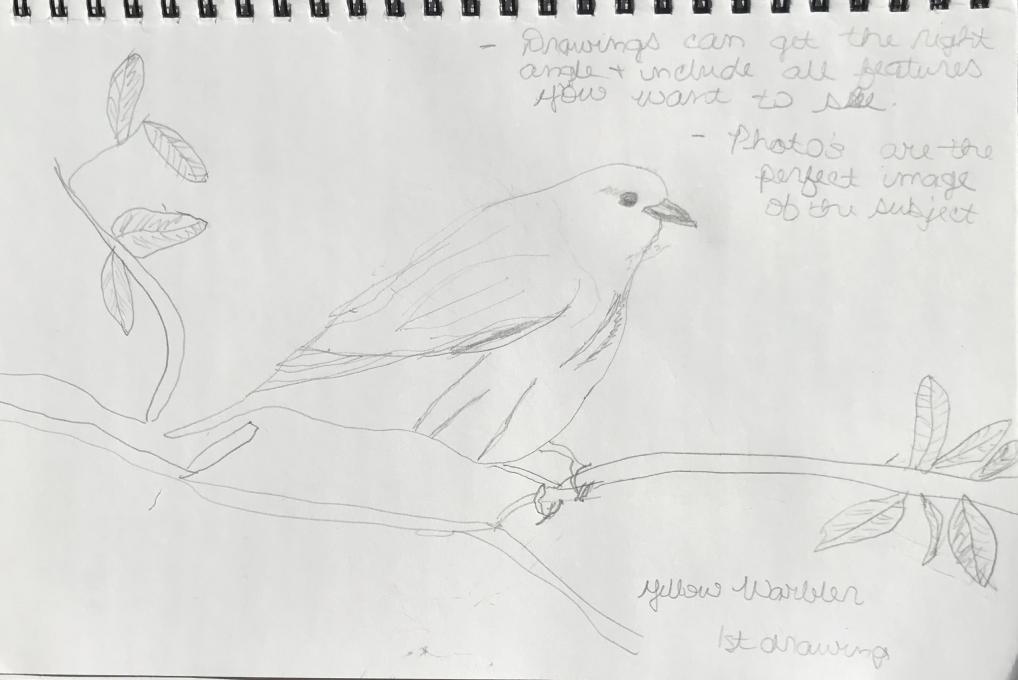 I felt that it was a little hard to make the picture as realistic as the real photo. I think the shape of the bird was a little challenging and drying the features inside the bird was extremely challenging. I might not have noticed how many streaks there were in the bird. Yes, it does make a difference when your journal it because you have to get all the details.
I felt that it was a little hard to make the picture as realistic as the real photo. I think the shape of the bird was a little challenging and drying the features inside the bird was extremely challenging. I might not have noticed how many streaks there were in the bird. Yes, it does make a difference when your journal it because you have to get all the details. 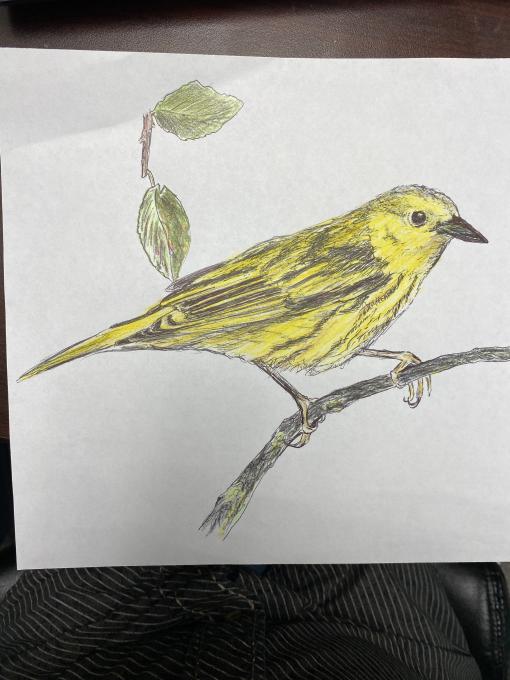
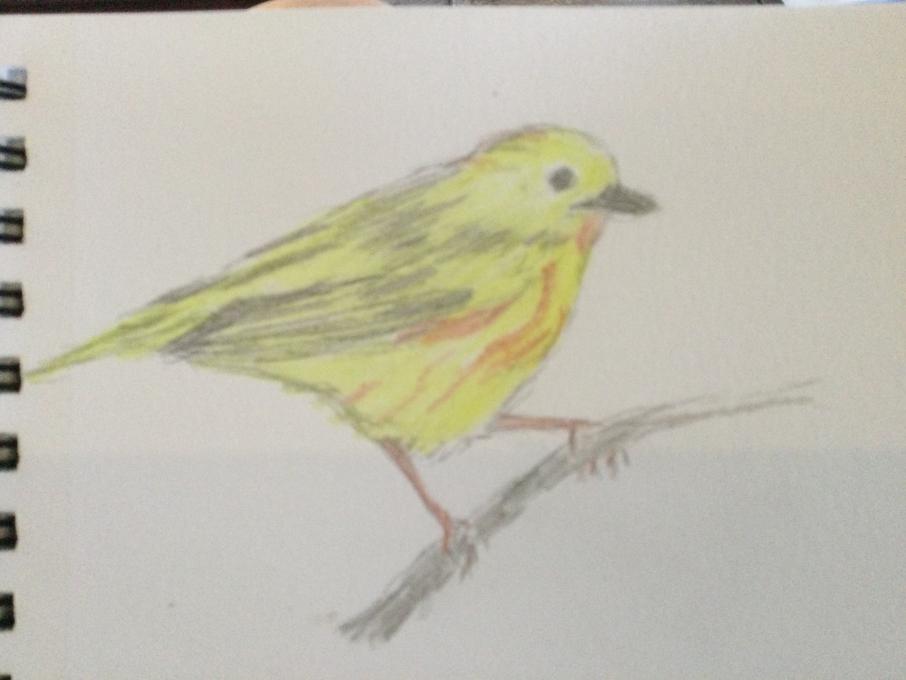
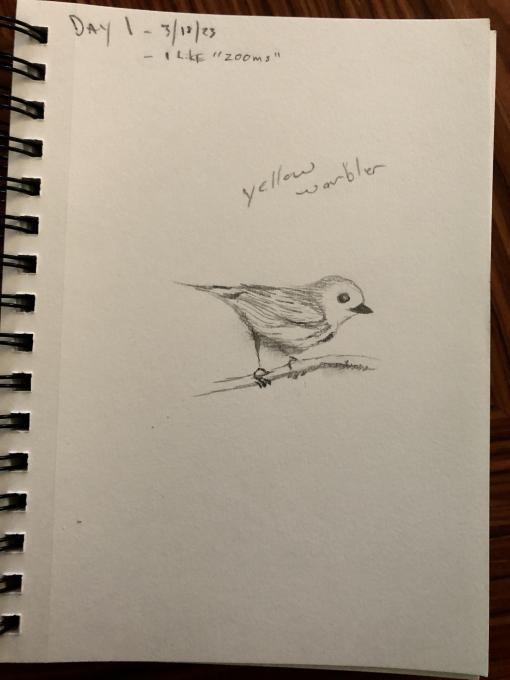
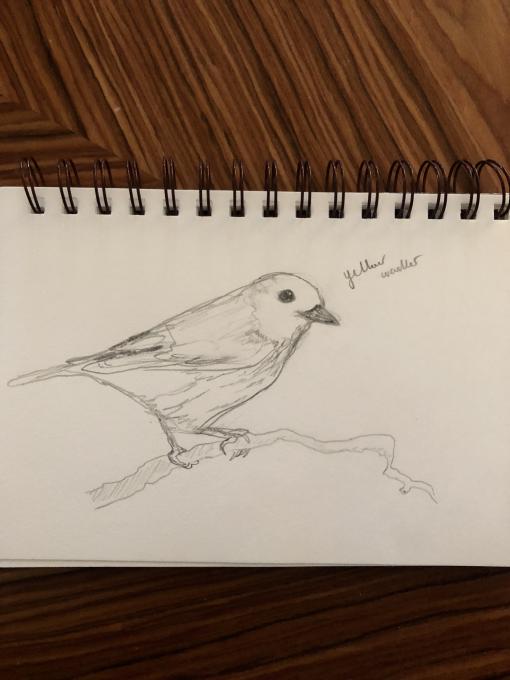
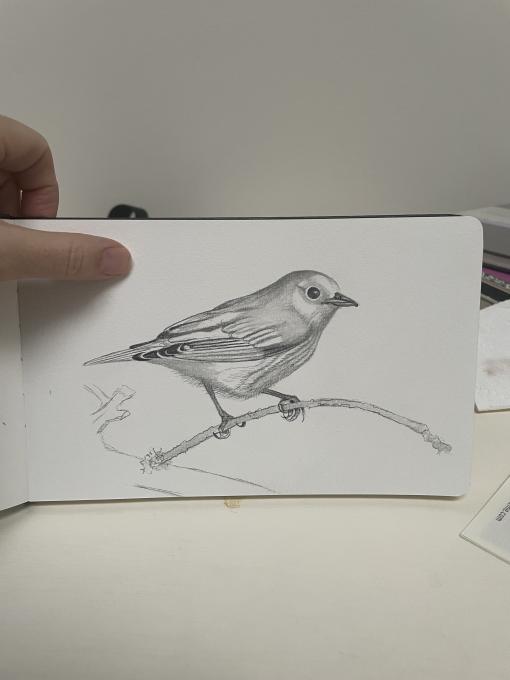
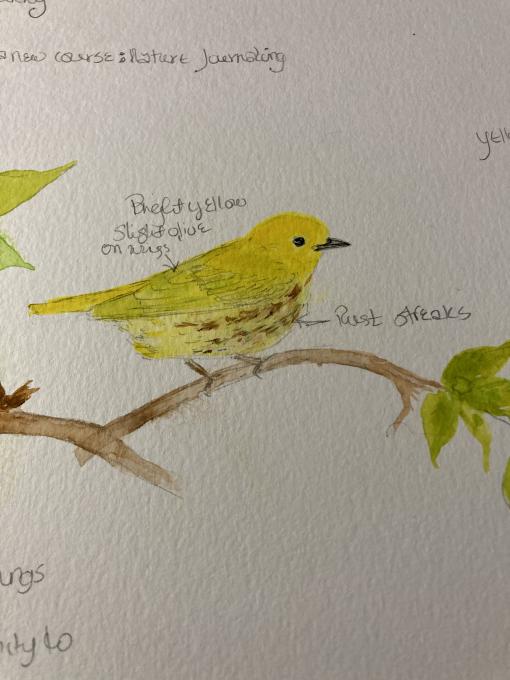
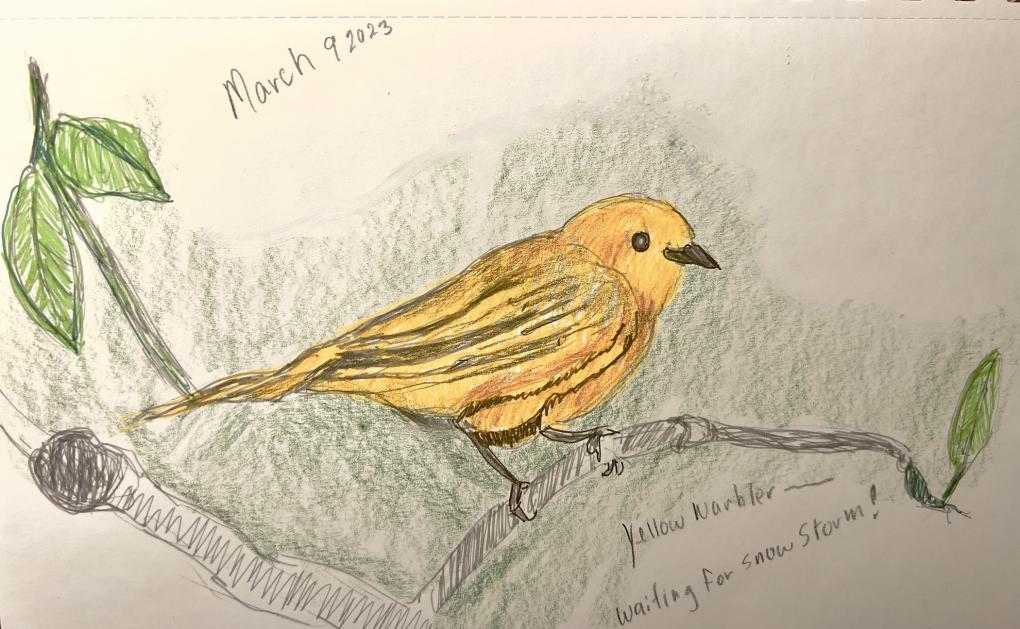
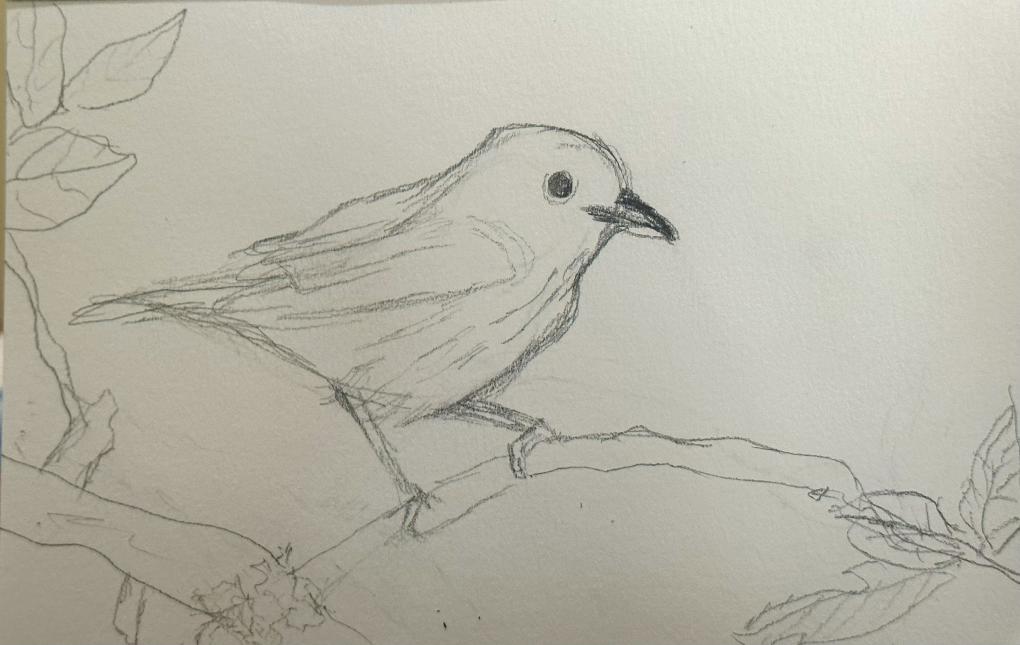

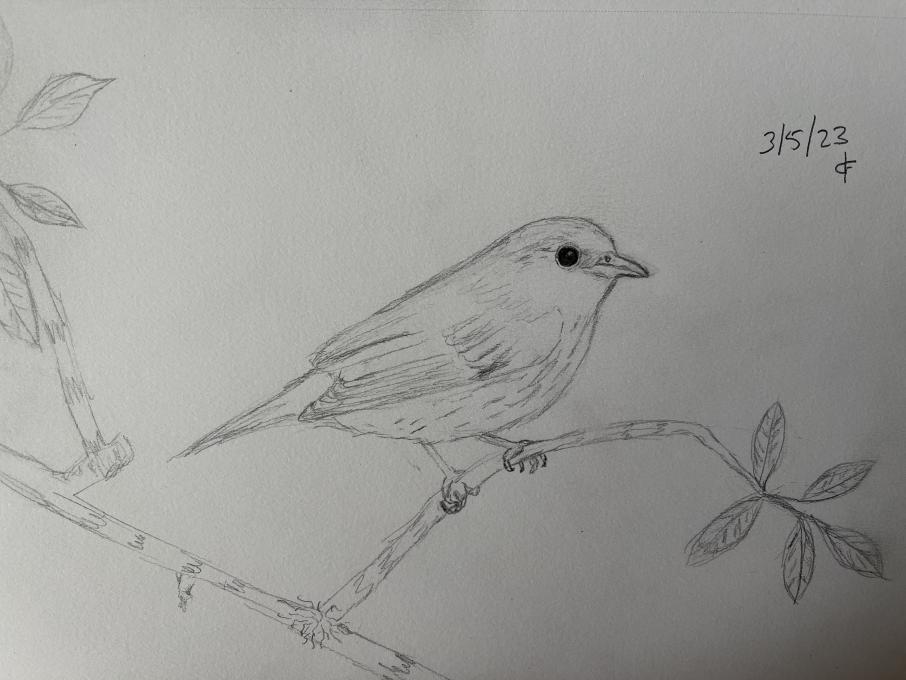
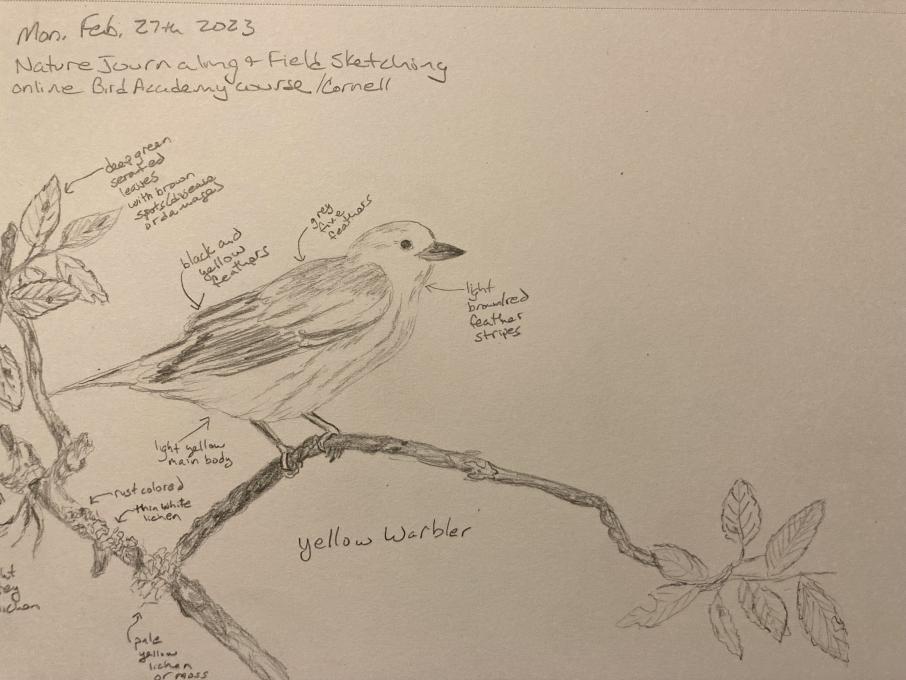 There is a little area around the eye from the eyelids that I would have missed if not sketching it.
There is a little area around the eye from the eyelids that I would have missed if not sketching it. 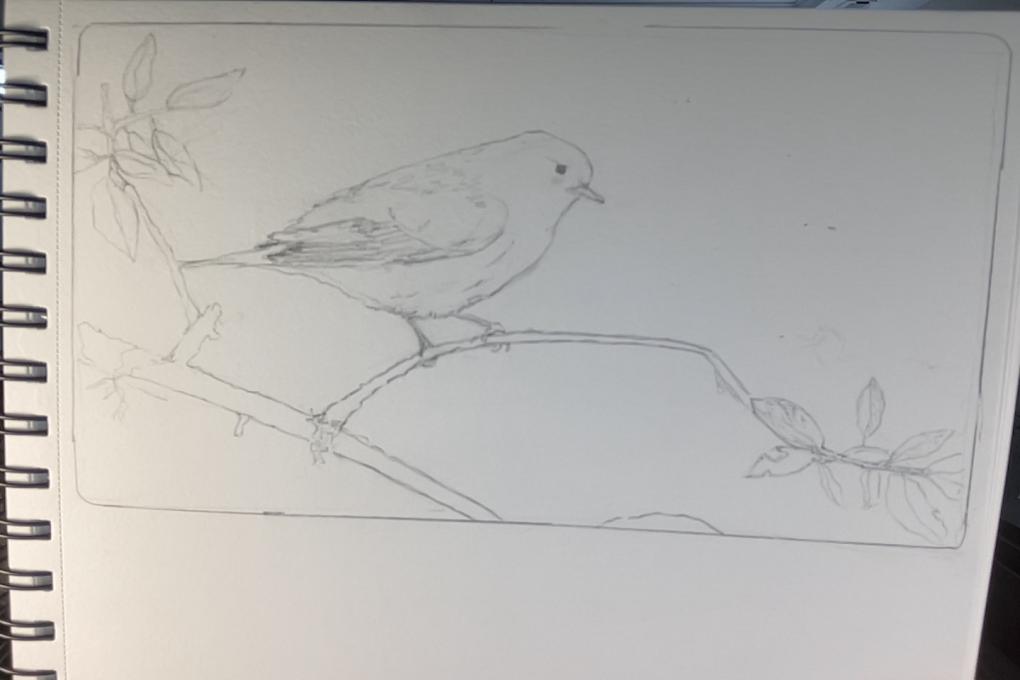
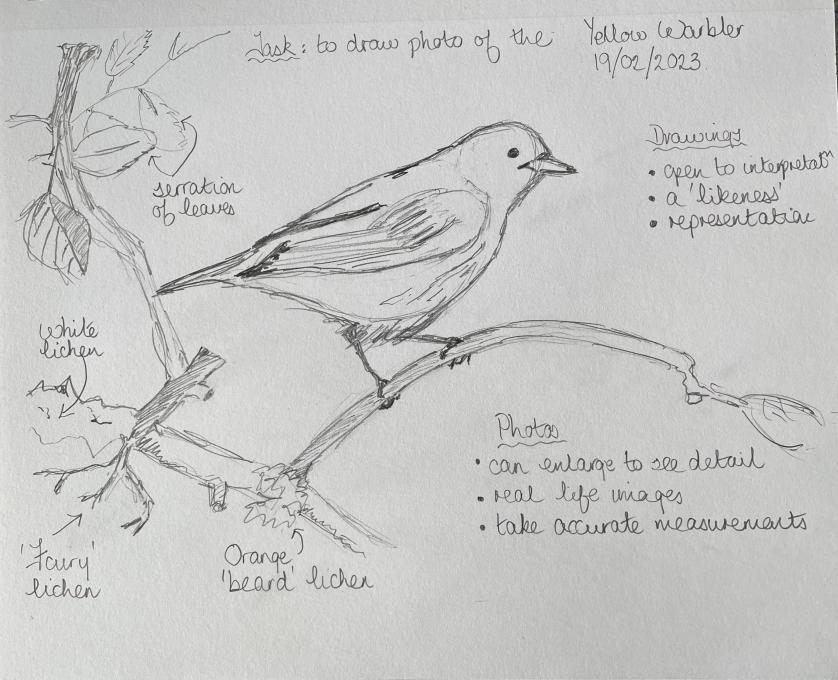 I am no artist, but I have really enjoyed doing this. I noticed small details of the feathering and leaves. Can’t wait to start adding watercolour but have no idea how to do it! I find proportions the most tricky. But I am pleased with the outcome of my first task. 😊
I am no artist, but I have really enjoyed doing this. I noticed small details of the feathering and leaves. Can’t wait to start adding watercolour but have no idea how to do it! I find proportions the most tricky. But I am pleased with the outcome of my first task. 😊 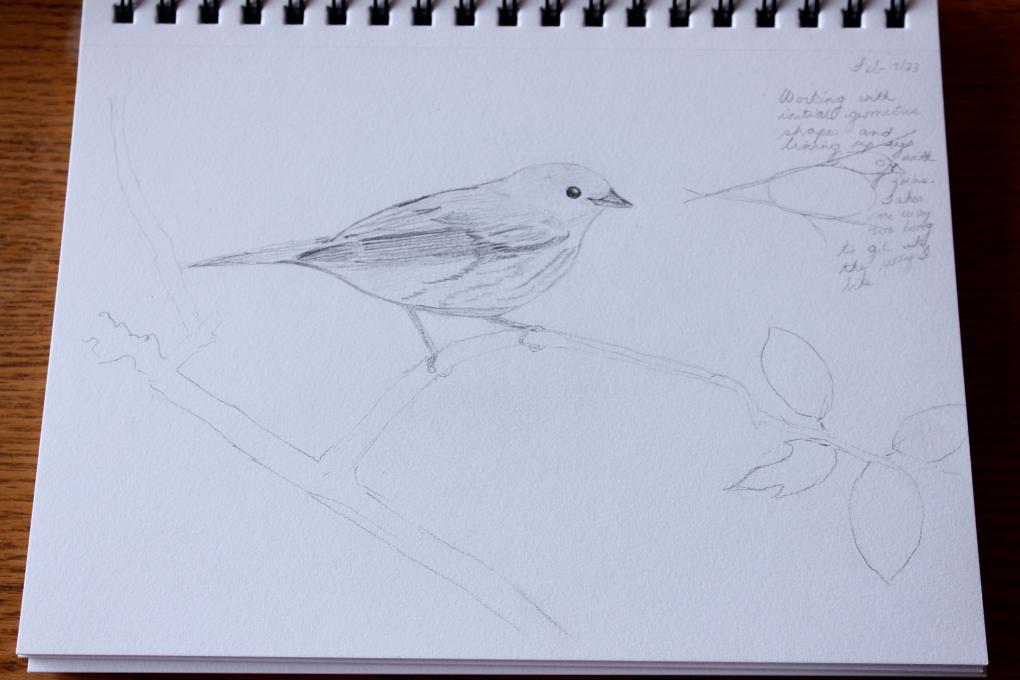
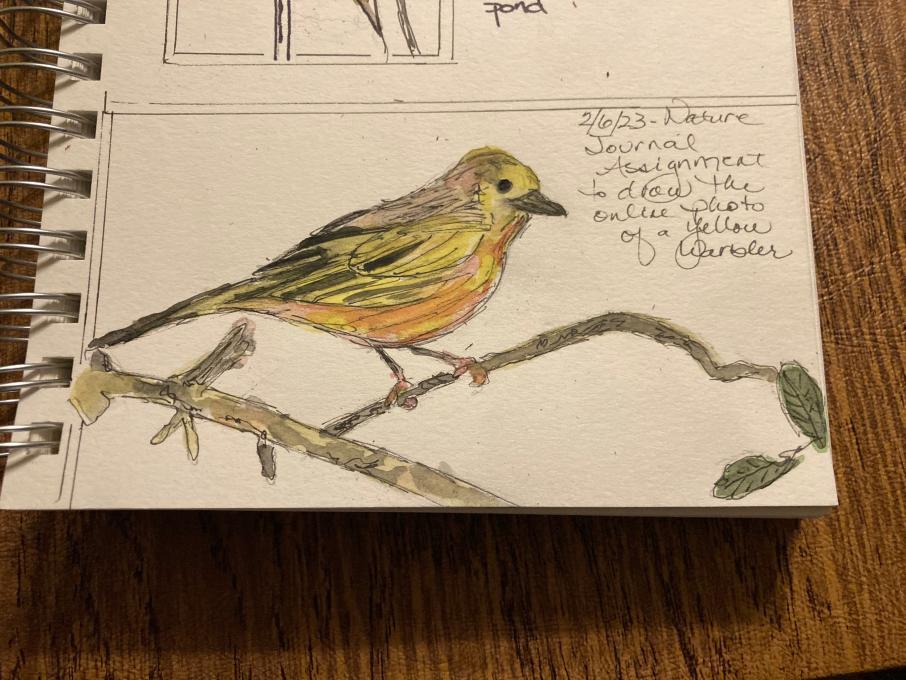 did not show the accurate coloring of the bird.
did not show the accurate coloring of the bird. 